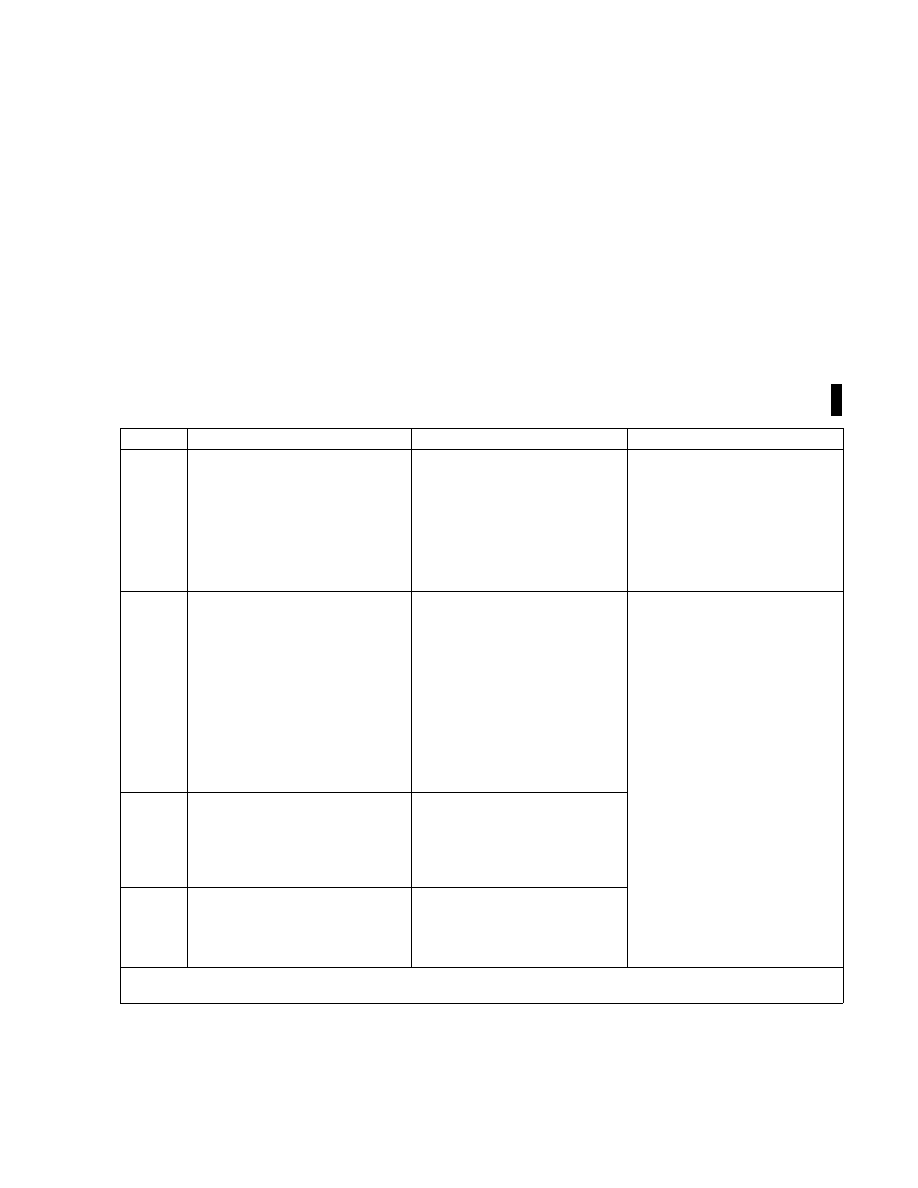
AIM
4/3/14
7−1−47
Meteorology
7
−
1
−
23. PIREPs Relating to Turbulence
a.
When encountering turbulence, pilots are
urgently requested to report such conditions to ATC
as soon as practicable. PIREPs relating to turbulence
should state:
1.
Aircraft location.
2.
Time of occurrence in UTC.
3.
Turbulence intensity.
4.
Whether the turbulence occurred in or near
clouds.
5.
Aircraft altitude or flight level.
6.
Type of aircraft.
7.
Duration of turbulence.
EXAMPLE
−
1. Over Omaha, 1232Z, moderate turbulence in clouds at
Flight Level three one zero, Boeing 707.
2. From five zero miles south of Albuquerque to three zero
miles north of Phoenix, 1250Z, occasional moderate chop
at Flight Level three three zero, DC8.
b.
Duration and classification of intensity should
TBL 7
−1−10
Turbulence Reporting Criteria Table
Intensity
Aircraft Reaction
Reaction Inside Aircraft
Reporting Term
−Definition
Light
Turbulence that momentarily causes
slight, erratic changes in altitude and/or
attitude (pitch, roll, yaw). Report as
Light Turbulence;
1
or
Turbulence that causes slight, rapid and
somewhat rhythmic bumpiness without
appreciable changes in altitude or
attitude. Report as Light Chop.
Occupants may feel a slight strain
against seat belts or shoulder straps.
Unsecured objects may be displaced
slightly. Food service may be con-
ducted and little or no difficulty is
encountered in walking.
Occasional−Less than
1
/
3
of the time.
Intermittent−
1
/
3
to
2
/
3.
Continuous−More than
2
/
3.
Moderate Turbulence that is similar to Light
Turbulence but of greater intensity.
Changes in altitude and/or attitude occur
but the aircraft remains in positive
control at all times. It usually causes
variations in indicated airspeed. Report
as Moderate Turbulence;
1
or
Turbulence that is similar to Light Chop
but of greater intensity. It causes rapid
bumps or jolts without appreciable
changes in aircraft altitude or attitude.
Report as Moderate Chop.
1
Occupants feel definite strains against
seat belts or shoulder straps. Unse-
cured objects are dislodged. Food
service and walking are difficult.
NOTE
1. Pilots should report location(s),
time (UTC), intensity, whether in or
near clouds, altitude, type of aircraft
and, when applicable, duration of
turbulence.
2. Duration may be based on time
between two locations or over a single
location. All locations should be
readily identifiable.
Severe
Turbulence that causes large, abrupt
changes in altitude and/or attitude. It
usually causes large variations in
indicated airspeed. Aircraft may be
momentarily out of control. Report as
Severe Turbulence.
1
Occupants are forced violently against
seat belts or shoulder straps. Unse-
cured objects are tossed about. Food
Service and walking are impossible.
EXAMPLES:
a. Over Omaha. 1232Z, Moderate
Turbulence, in cloud, Flight
Level 310, B707.
Extreme
Turbulence in which the aircraft is
violently tossed about and is practically
impossible to control. It may cause
structural damage. Report as Extreme
Turbulence.
1
b. From 50 miles south of Albuquer-
que to 30 miles north of Phoenix,
1210Z to 1250Z, occasional Moderate
Chop, Flight Level 330, DC8.
1
High level turbulence (normally above 15,000 feet ASL) not associated with cumuliform cloudiness, including thunderstorms,
should be reported as CAT (clear air turbulence) preceded by the appropriate intensity, or light or moderate chop.